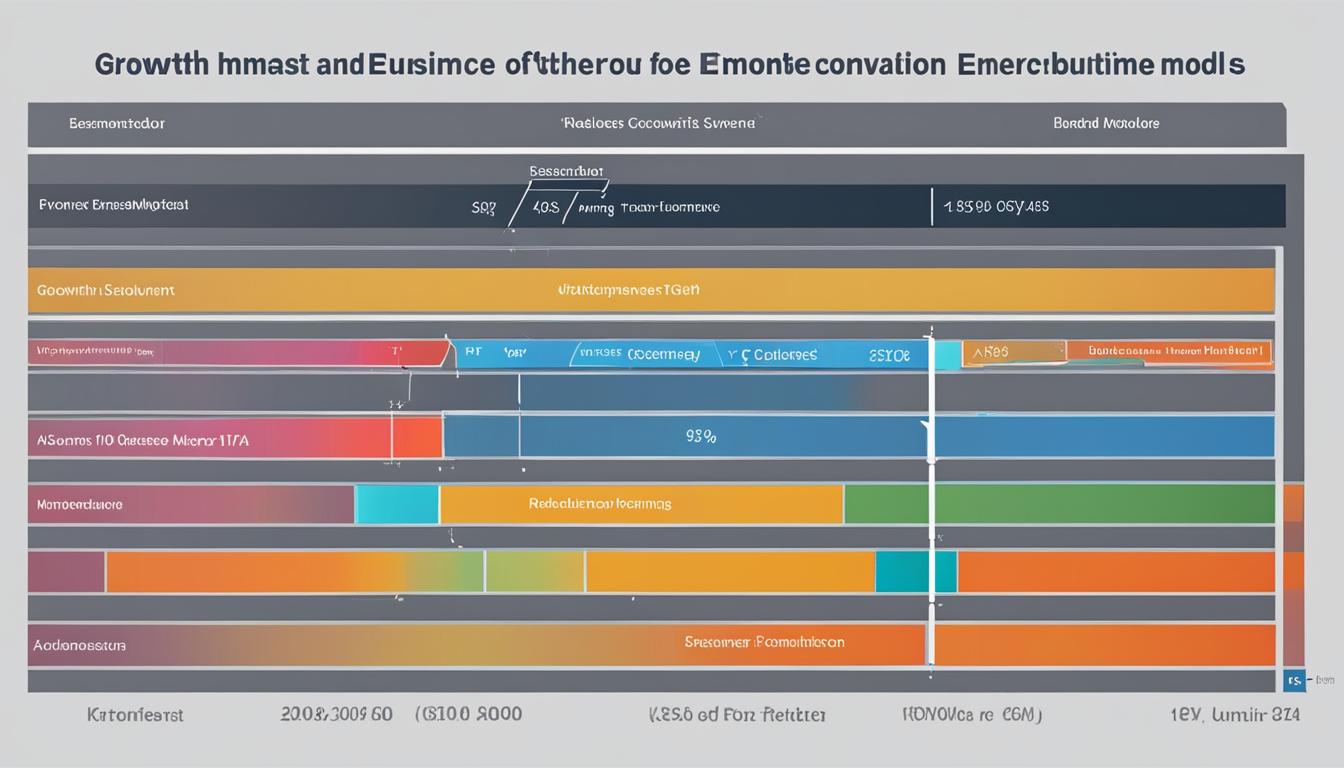The history of online shopping is a fascinating journey through the evolution of e-commerce. Over the decades, online retail has experienced significant milestones, transforming the way we shop and shaping the digital landscape. Let’s take a step back and explore the historical perspective of online retail.
In the 1970s-1980s, electronic commerce (e-commerce) technologies emerged, laying the foundation for the first online shopping systems. The 1980s witnessed the introduction of pioneering platforms like CompuServe’s Electronic Mall and the BBC’s TeleShop, where consumers could browse and purchase products online.
The rise of the Internet in the 1990s marked a pivotal moment in online shopping. Companies like Amazon and eBay emerged as trendsetters, bringing convenience and limitless choices to consumers worldwide. This era also saw advancements in security and trust, with SSL encryption technology making online transactions more secure.
The early 2000s saw the proliferation of online marketplaces, such as Alibaba and Etsy, providing a platform for small businesses to reach a global customer base. The 2010s ushered in the era of mobile commerce, allowing consumers to make purchases on the go via their smartphones. Personalization and AI technologies also became integral, enhancing the shopping experience.
The COVID-19 pandemic in 2020 further accelerated the growth of online shopping. With lockdowns and social distancing measures in place, consumers turned to e-commerce for their shopping needs, bridging the gap between online and offline channels.
Through the years, online retail has evolved, adapting to changing consumer behavior and technological advancements. Today, it has become an indispensable part of our daily lives, revolutionizing the way we shop and transforming the retail landscape.
Key Takeaways:
- Online shopping has a rich historical perspective, dating back to the 1970s-1980s.
- The rise of the Internet in the 1990s marked a milestone in online retail.
- Advancements in security and trust, such as SSL encryption technology, have played a crucial role in online shopping.
- The early 2000s witnessed the proliferation of online marketplaces, providing a platform for sellers to expand their reach.
- The integration of personalization and AI technologies has revolutionized the online shopping experience.
The Evolution of Online Shopping Technologies
In the early beginnings of online shopping in the 1970s-1980s, the concept of electronic commerce (e-commerce) technologies emerged. It wasn’t until the 1980s that the first online shopping systems were introduced, such as the Electronic Mall by CompuServe and the TeleShop by the BBC.
The rise of the Internet in the 1990s brought significant advancements to online shopping. User-friendly interfaces were developed, making it easier for consumers to navigate and make purchases. This era also witnessed the founding of influential companies like Amazon and eBay, which played a pivotal role in shaping the online retail landscape.
To address the growing concerns about security and trust, the late 1990s saw the introduction of SSL encryption technology. This innovation enhanced the safety of online transactions, fostering a sense of trust among consumers.
The early 2000s marked the proliferation of online marketplaces, providing platforms for sellers to reach a wider customer base. Marketplaces like Alibaba and Etsy enabled individuals and businesses to sell their products and services to a global audience, revolutionizing the way commerce was conducted.
The 2010s brought about the era of mobile commerce, with the advent of smartphones and tablets. Consumers could now make purchases conveniently from their mobile devices, anytime and anywhere. This shift to mobile commerce fueled the expansion of the e-commerce market and opened up new avenues for businesses.
In recent years, online shopping has been further enhanced by the integration of personalization and AI-driven technologies. Through machine learning algorithms, e-commerce platforms are able to tailor recommendations and customize the shopping experience for individual users, providing a more personalized and engaging journey.
4. Direct-to-Consumer (D2C)
D2C ecommerce allows businesses to bypass traditional retail channels and sell directly to consumers. This model enables brands to have complete control over their product pricing, distribution, and customer experience.
5. Consumer-to-Business (C2B)
In C2B ecommerce, consumers offer products or services to businesses. This model is commonly seen in freelance marketplaces, where individuals provide their skills and expertise to companies in need.
6. Business-to-Administration (B2A)
B2A ecommerce involves transactions between businesses and government administrations. In this model, businesses provide products or services to government entities, such as software solutions for public institutions.
7. Consumer-to-Administration (C2A)
C2A ecommerce refers to transactions between individual consumers and government administrations. Examples of C2A include online tax filing systems, online bidding platforms for government contracts, and online portals for government services.
The rise of ecommerce has provided endless possibilities for businesses to explore different models and reach global audiences. These business models have reshaped the retail landscape and continue to evolve as technology advances and consumer behaviors change.
Conclusion
Online shopping and the rise of e-commerce have revolutionized the retail landscape, sparking a digital revolution in the way people shop. The evolution of online shopping technologies, along with advancements in security and trust, the proliferation of online marketplaces, the rise of mobile commerce, and the integration of personalization and AI technologies, have all contributed to the tremendous growth of online retail.
The COVID-19 pandemic acted as a catalyst, accelerating the adoption of e-commerce as more consumers turned to online shopping for their needs. Today, online shopping has become an integral part of everyday life, providing consumers with unparalleled access to a vast array of products and the convenience of shopping from the comfort of their homes.
The history and impact of online retail showcase the significant influence of technological advancements and shifting consumer behavior on the way we shop. The digital retail revolution, driven by the seamless integration of online shopping into our daily lives, has forever transformed the retail landscape and shows no signs of slowing down. With the continued development of e-commerce and the ongoing integration of innovative technologies, the future of online shopping holds limitless possibilities, ensuring a vibrant and dynamic retail experience for consumers around the world.
FAQ
What is the history of online shopping?
Online shopping dates back several decades, with the first online shopping systems emerging in the 1980s. The rise of the Internet in the 1990s marked a milestone in online shopping, and the industry has undergone significant transformations over time.
What were the major developments in online shopping technologies?
Online shopping technologies have evolved over time, with advancements in security and trust, the proliferation of online marketplaces, the rise of mobile commerce, and the integration of personalization and AI technologies.
What is the impact of online retail on global sales?
E-commerce has experienced steady growth and is projected to reach approximately $6.3 trillion in sales worldwide by 2023. China and the USA are the largest e-commerce markets, with online sales expected to reach 22% of global retail sales by 2023.
What are the different business models in e-commerce?
The main types of e-commerce business models include Business-to-Consumer (B2C), Business-to-Business (B2B), Consumer-to-Consumer (C2C), Direct-to-Consumer (D2C), Consumer-to-Business (C2B), Business-to-Administration (B2A), and Consumer-to-Administration (C2A).
What is the overall impact of online retail?
Online shopping and the rise of e-commerce have transformed the retail landscape, leading to a digital revolution in the way people shop. The integration of technology and changes in consumer behavior have shaped the way we shop and paved the way for the digital retail revolution we experience today.
Source Links
- https://beambox.com/townsquare/the-history-of-online-shopping
- https://www.linkedin.com/pulse/history-online-shopping-coffeebreak-logistics-supply-chain
- https://www.bigcommerce.com/articles/ecommerce/


